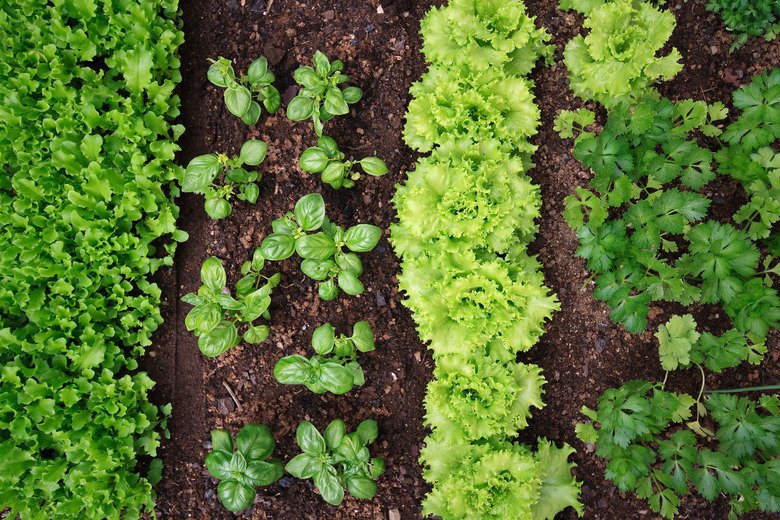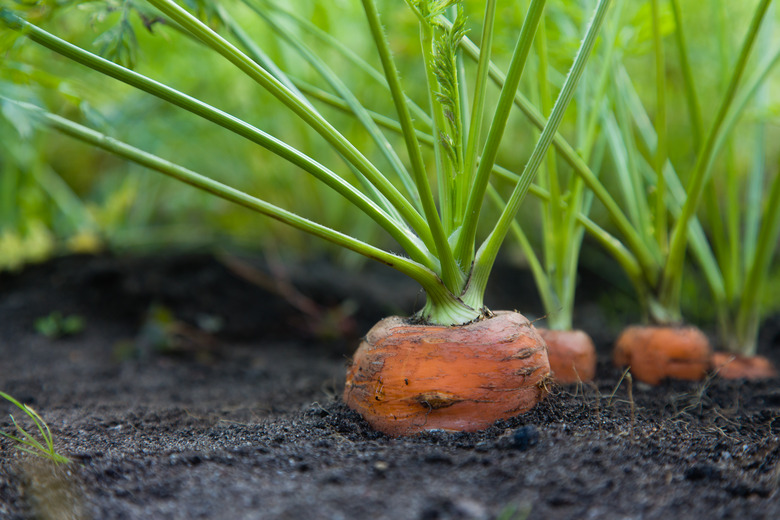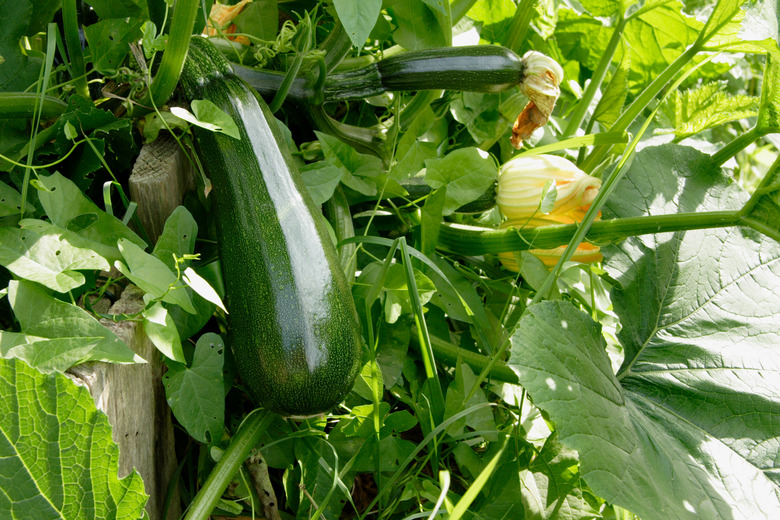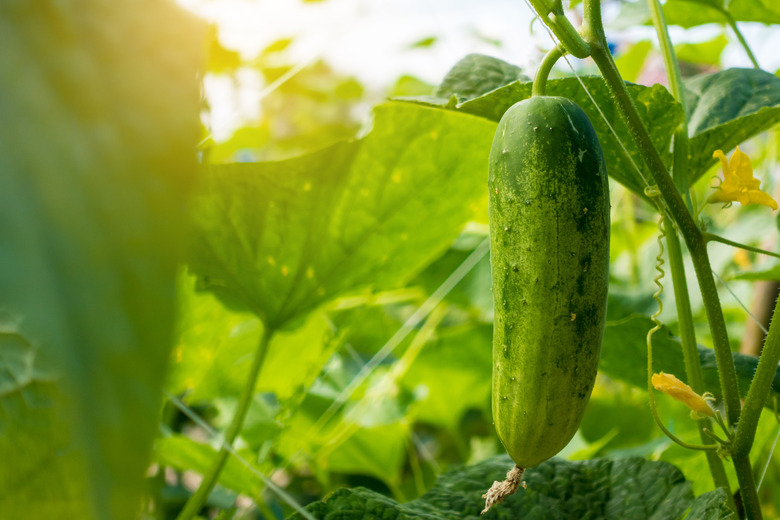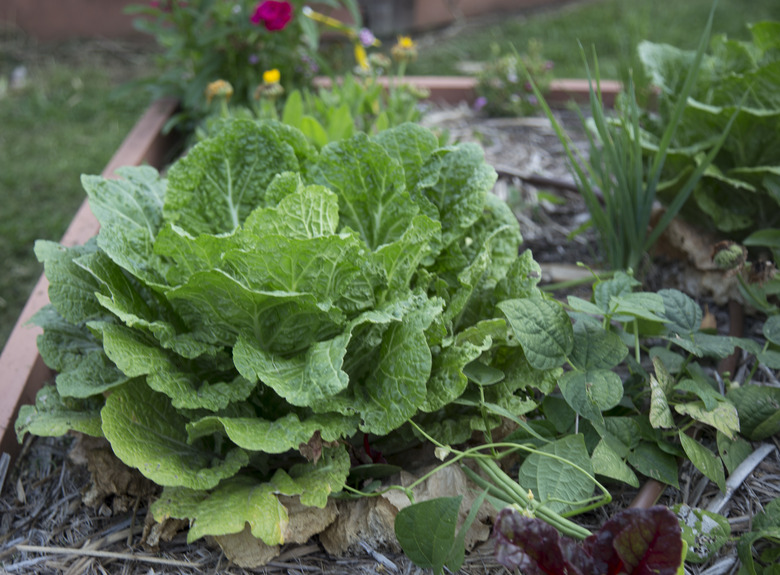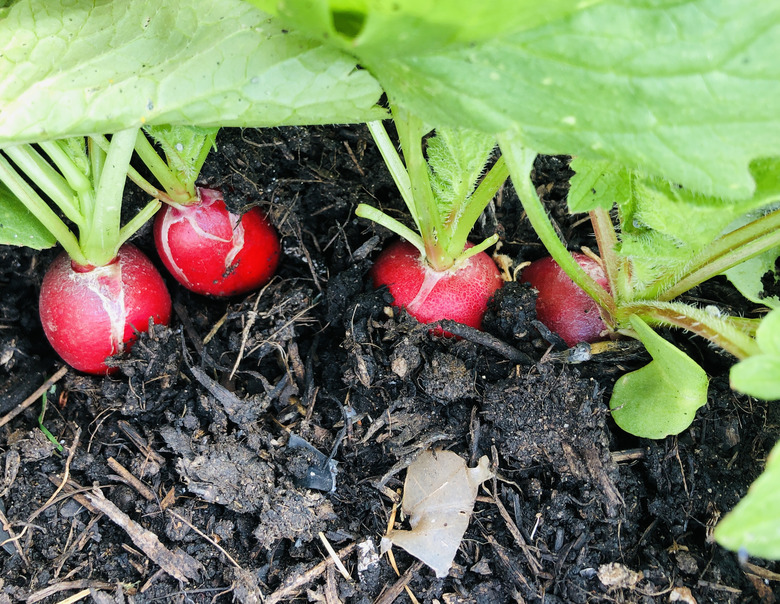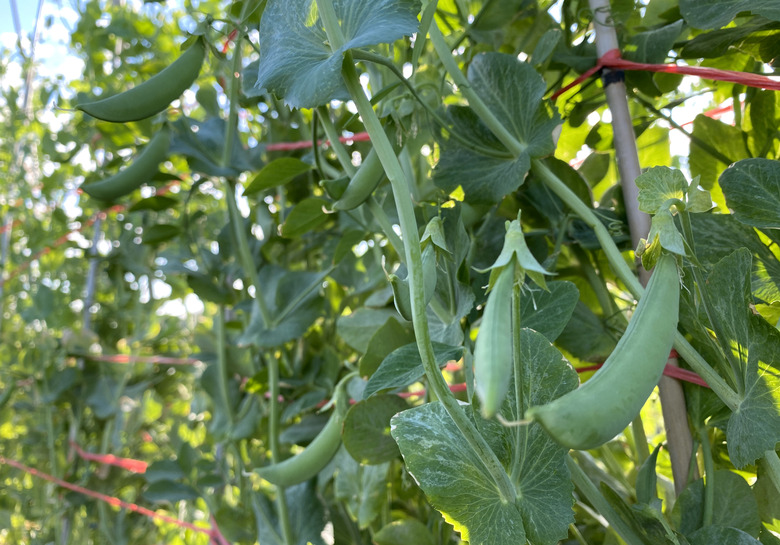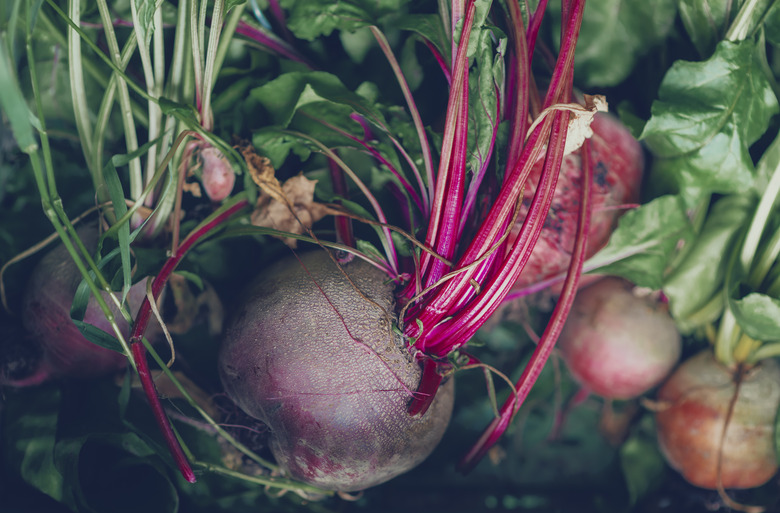The 8 Easiest Vegetables To Grow
When it comes to growing vegetables for the dinner table, it seems to be a no-brainer that you'd want the easiest vegetables to grow, but for some of us, knowing the easiest varieties is an absolute necessity. Nurturing plants that bear food is sometimes fraught with potential problems, from unfavorable weather to messing up the watering schedule to losses from squirrels and other hungry critters. It just makes sense, especially for beginner gardeners, to choose plants that minimize the struggle so you can actually reap — and eat — what you sow. Fortunately, there are plenty of good options for your vegetable garden that you can grow right from seed.
1. Carrots
1. Carrots
Carrots (Daucus carota subsp. sativus) are easy to grow on many levels. They don't need careful watering or much fertilizing; they like full sun but are OK with partial shade; they grow in the ground so they're protected from most pests; and they are generally resistant to disease. They can even survive a frost and actually like a little cold weather, so you don't have to rush out and cover them if the temperature dips or an early snow is on the way. Carrots are also fun to harvest, digging them up one by one like a treasure hunt. All of these characteristics make carrots a great first vegetable for beginners and kids to try. For best results, be sure to follow three rules: sow seeds in loose, sandy or loamy soil; space the seeds and rows carefully; and don't be afraid to thin the sprouts so they aren't overcrowded.
2. Zucchini and Other Summer Squashes
2. Zucchini and Other Summer Squashes
Zucchini and yellow squash (Cucurbita pepo) are common types of "summer squash" and are harvested throughout the summer. In the peak of the growing season, they grow so fast that you can almost watch them get bigger. In fact, it's best to check your crop daily and pick the fruits when they're still young and tender. If they get away from you, they can easily grow to 2 feet long and won't taste very good. Plant summer squash seeds in moist but well-draining soil that is at least 60 degrees Fahrenheit and in full sun. Choose a bush variety if space is limited, as squash leaves get huge and can quickly take over small spaces.
3. Cucumbers
3. Cucumbers
Cucumbers (Cucumis sativus) are good veggies for those seeking instant gratification or at least relatively quick results since the plants grow quickly, and the fruit can be ready in as little as six weeks. Vining varieties grow up a trellis or fence and keep the fruit off the ground. Bush varieties are more compact, growing quickly, and need a little less maintenance. Cucumbers like warm soil and shouldn't be planted too early. They also need consistent watering to stay plump and healthy. If you miss a watering or two or forget to mulch, the fruits might let you know by puckering or changing shape.
4. Leafy Greens
4. Leafy Greens
If anything in a garden grows "like a weed," it's lettuce (Lactuca sativa) and its cousins spinach (Spinacia oleracea), arugula (Eruca vesicaria) and chard (Beta vulgaris [Leaf Beet Group]). All are prolific producers and won't take over a small garden like zucchini or cucumber. In fact, many varieties of lettuce and spinach like protection from heat if not full shade, so they're great for growing in the shadows of taller plants, making them space efficient. Perhaps the best trait of leaf lettuce, spinach, chard and arugula is that you can harvest a little or a lot. Pick a few leaves from various plants for a quick salad with your cherry tomatoes (leaving the rest in the ground where they'll stay as fresh as possible) or trim an entire plant about 1 inch from the ground and it will grow back.
5. Kale and Collards
5. Kale and Collards
Kale (Brassica oleracea [Acephala Group]) looks like crazy, frilly lettuce but is actually part of the mustard family, which also includes cabbage, kale, and broccoli. Another vegetable in the same genus, species, group, and family is collards. Collard greens like the cool sides of the seasons — early spring and late summer — so you can sow seeds earlier in spring than many other vegetables as well as later in summer for a fall harvest. These greens are frost tolerant and in some climates can even grow through winter. The plants stop producing when the temperature drops below 20 degrees Fahrenheit. Like lettuce, kale and collard leaves can be harvested without killing the plant or stopping its production. Regular harvesting helps ensure that you enjoy the leaves at their peak (and not overgrown). Most types of kale get a bit sweeter after a light frost or snow.
6. Radishes
6. Radishes
Like kale, radishes (Raphanus raphanistrum subsp. sativus) are another good option for early spring and late-summer planting. They don't do well in the heat of midsummer and should be harvested before it gets too hot. At the end of summer, you can plant radishes as late as one month before the first frost, and you'll still get a fall harvest. Radishes are fun to plant with carrots in the ground or in raised beds; you can even mix the seeds together. When the radishes get pulled up, they'll leave space and nicely loosened soil in which the carrots can thrive. Add some chives to the mix to attract bees, repel pests and make your salad that much tastier.
7. Peas and Beans
7. Peas and Beans
Peas (Pisum sativum) are popular plants for kids to grow because they're fun and easy to pick, and they never taste better than when they are eaten right out of your hands in the garden. If you just can't wait to start gardening in the spring, plant peas. They can go in the ground up to six weeks before the last frost in spring (as long as the soil is 45 degrees Fahrenheit or warmer). Peas grow upward and must be supported by trellises or poles. This makes them easy to harvest and creates an attractive vertical backdrop in the garden. The three most common varieties are garden or sweet peas (don't eat the shell), snow peas (eat the shell) and snap peas (eat the shell).
Pole beans and green beans (Phaseolus vulgaris), also known as string beans, are similar to peas in that they grow vertically and usually need support, such as a pole or trellis, but the bush bean plant spreads outward and doesn't need any vertical support. Bean plants produce lots of fruit that is great for picking (regularly) and eating right away. They like warmer weather than peas and can be planted after the last frost. Once they start producing well, you can start picking beans off the vine every day. Beans add nitrogen to the soil that benefits other herbs and veggies you plant nearby, such as cilantro.
8. Beets
8. Beets
Beets (Beta vulgaris [Garden Beet Group) are flexible about temperature and can be planted in any month from March to September except for May. They need plenty of water but are otherwise low-maintenance, although they should be thinned (like carrots) to prevent overcrowding. Beets can be harvested at almost any time depending on your preference. One of the best things about beets is that even though they are root vegetables, you can also eat the leaves. The bright-colored bulb is the root, and the greens are just as tasty. Sautéed beet greens taste like a cross between spinach and Swiss chard.
